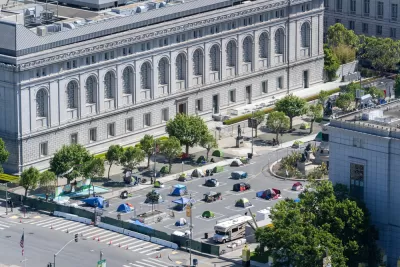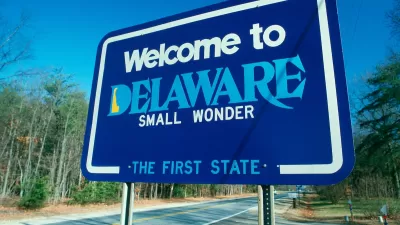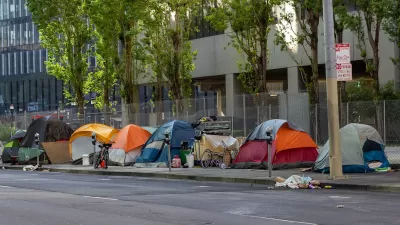While the city saw fewer people experiencing homelessness for the first time in years, homelessness across six Bay Area counties grew by 8 percent.

As we noted in a recent story, the number of people experiencing homelessness in San Francisco is lower for the first time since 2015. But just across the bay in Contra Costa and Alameda counties, the picture is less rosy: Contra Costa County’s population of unhoused residents rose by 35 percent, while Alameda’s jumped by 22 percent.
Lauren Hepler, Sarah Ravani, and Yoohyun Jung of the San Francisco Chronicle report on the new numbers. “Six of nine Bay Area counties released estimates on Monday: Alameda, Contra Costa, Marin, San Francisco, Santa Clara and Sonoma. They posted a combined 8% increase in the regional homeless population, up to 34,636 people this year compared with 32,043 three years ago.”
“Housing advocates say the crisis is decades in the making, with California lacking some 2.4 million affordable homes for low-income households after years of neighbors and local politicians blocking new development, plus high building costs.” This despite “the unprecedented measures that public agencies took to get people off the streets during the pandemic: paid hotel rooms, sanctioned tent cities, tiny home villages and all manner of encampment sweeps.”
“To more systematically address the underlying lack of housing, groups including [founder and CEO Tomiquia Moss’s] All Home estimate that the region would need to spend at least $6 billion to slash the Bay Area’s unsheltered homeless population 75% by 2024.” The source article details the funding allocated by the state so far, as well as the various responses undertaken by California cities to address the crisis.
FULL STORY: Homelessness surged 35% in one Bay Area county. Here’s what new data for each region reveals

Study: Maui’s Plan to Convert Vacation Rentals to Long-Term Housing Could Cause Nearly $1 Billion Economic Loss
The plan would reduce visitor accommodation by 25,% resulting in 1,900 jobs lost.

Alabama: Trump Terminates Settlements for Black Communities Harmed By Raw Sewage
Trump deemed the landmark civil rights agreement “illegal DEI and environmental justice policy.”

Why Should We Subsidize Public Transportation?
Many public transit agencies face financial stress due to rising costs, declining fare revenue, and declining subsidies. Transit advocates must provide a strong business case for increasing public transit funding.

Paris Bike Boom Leads to Steep Drop in Air Pollution
The French city’s air quality has improved dramatically in the past 20 years, coinciding with a growth in cycling.

Why Housing Costs More to Build in California Than in Texas
Hard costs like labor and materials combined with ‘soft’ costs such as permitting make building in the San Francisco Bay Area almost three times as costly as in Texas cities.

San Diego County Sees a Rise in Urban Coyotes
San Diego County experiences a rise in urban coyotes, as sightings become prevalent throughout its urban neighbourhoods and surrounding areas.
Urban Design for Planners 1: Software Tools
This six-course series explores essential urban design concepts using open source software and equips planners with the tools they need to participate fully in the urban design process.
Planning for Universal Design
Learn the tools for implementing Universal Design in planning regulations.
Smith Gee Studio
Alamo Area Metropolitan Planning Organization
City of Santa Clarita
Institute for Housing and Urban Development Studies (IHS)
City of Grandview
Harvard GSD Executive Education
Toledo-Lucas County Plan Commissions
Salt Lake City
NYU Wagner Graduate School of Public Service





























